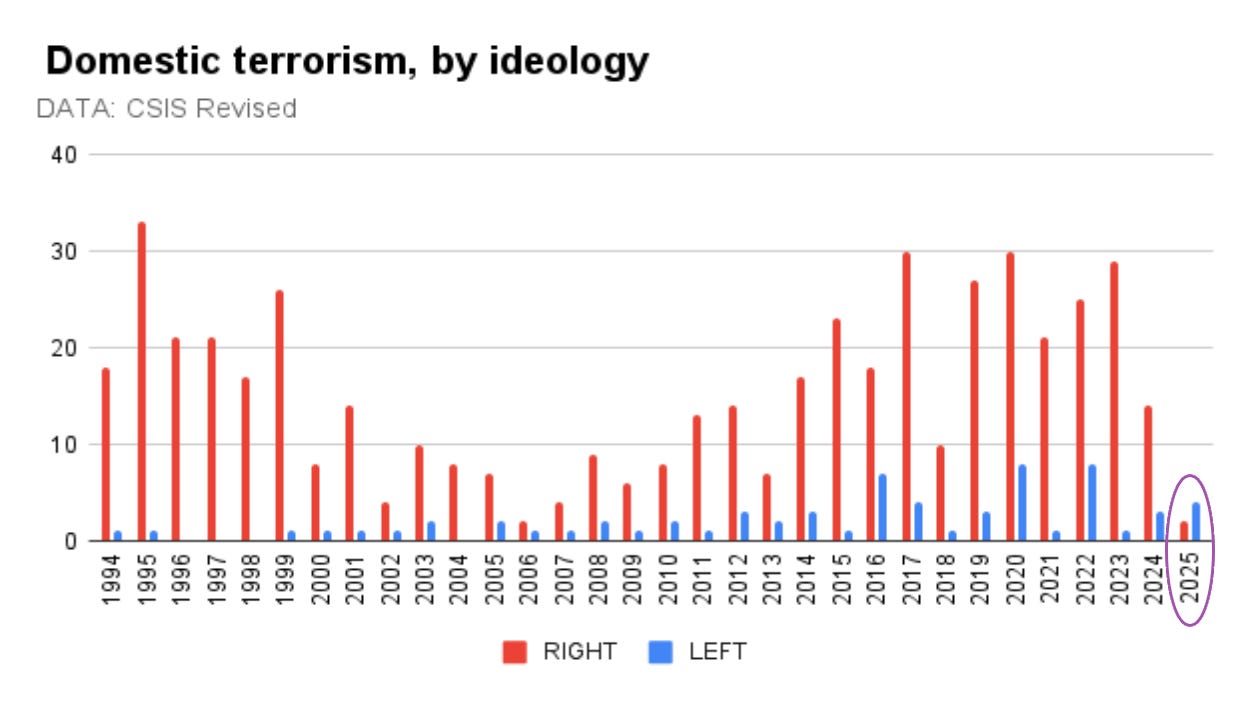The "left terrorism hits 30-year high" headlines are a lie
A new study has the media inaccurately reporting on a statistical fluctuation in left-wing terrorism.
Take a look at the chart above. Let it sink in. These are the numbers that, this weekend, provoked a maelstrom of panicked media coverage from outlet after outlet over a supposed surge of left-wing terrorism.
The left has been associated with an average of two terrorist attacks per year for the last thirty years. To put that in perspective, the right has…




